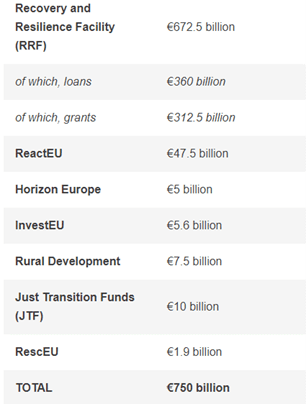A recovery plan for Europe – one year after the new European SME strategy

One year ago, on 10 March 2020, the European Commission published its new industrial strategy, including a dedicated SME Strategy 'for a sustainable and digital Europe.' At the same time the Covid-19 crisis gained momentum and the first lockdowns were implemented. One year later the Covid-19 crisis is still with us, and new plans were necessary to mitigate its economic consequences.
Last 10 March the Committee of the Regions organised an event on the role and challenges of SMEs in the light of the Covid-19 crisis and the anniversary of the SME strategy. Is the strategy already outdated? Should it be subject to a revision to adapt it to the new reality of the pandemic? The intention of the European Commission, with employment-enhancing measures, and upward convergence strengthened by the Recovery and Resilience Facility, is to give the SME Strategy new impetus through investments in environment, and digital initiatives. A number of instruments reflect this priority setting.

The European Union did work out the NextGenerationEU, “a €750 billion temporary recovery instrument to help repair the immediate economic and social damage brought about by the coronavirus pandemic” (Source European Commission, see also breakdown of the instrument on the right) which will also encompass programs targeting SMEs.
The Recovery and Resilience Facility represents by far the largest part of the NextGenerationEU plan and will make €672.5 billion in loans and grants available to support reforms and investments undertaken by Member States.
The Recovery and Resilience Facility entered into force on 19 February 2021 and it is now up to the Member Sates to prepare their national plans of investment and reforms that shall be funded by this Facility.
Source European Commission
The following picture shows the main areas for investments under the Recovery and Resilience Facility:

Source European Commission
Especially the green and digital transformation of the economy shall represent each a large share of the planned investments. Those priorities mirror the ones that were already part of the SME Strategy.
The involvement of regional and local authorities is essential to translate the EU instruments into viable projects on the ground, where SMEs can benefit from the available funds. The way this fundamental subsidiarity principle will be ensured differs from country to country across the EU.
The Policy Learning Platform has organised a webinar with this focus last 2 March. You can watch the recordings and read the key learnings here!
